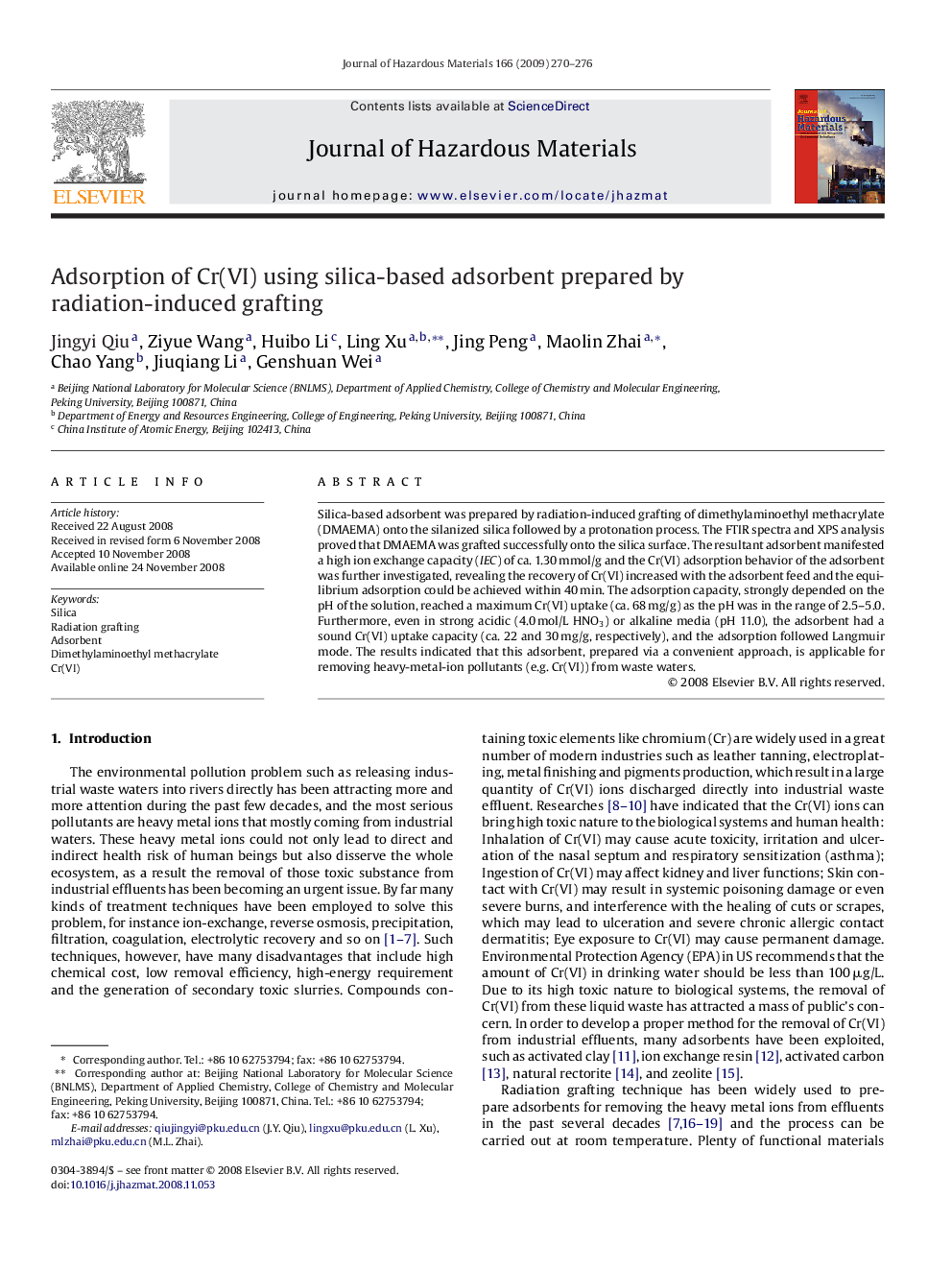| Article ID | Journal | Published Year | Pages | File Type |
|---|---|---|---|---|
| 581876 | Journal of Hazardous Materials | 2009 | 7 Pages |
Abstract
Silica-based adsorbent was prepared by radiation-induced grafting of dimethylaminoethyl methacrylate (DMAEMA) onto the silanized silica followed by a protonation process. The FTIR spectra and XPS analysis proved that DMAEMA was grafted successfully onto the silica surface. The resultant adsorbent manifested a high ion exchange capacity (IEC) of ca. 1.30Â mmol/g and the Cr(VI) adsorption behavior of the adsorbent was further investigated, revealing the recovery of Cr(VI) increased with the adsorbent feed and the equilibrium adsorption could be achieved within 40Â min. The adsorption capacity, strongly depended on the pH of the solution, reached a maximum Cr(VI) uptake (ca. 68Â mg/g) as the pH was in the range of 2.5-5.0. Furthermore, even in strong acidic (4.0Â mol/L HNO3) or alkaline media (pH 11.0), the adsorbent had a sound Cr(VI) uptake capacity (ca. 22 and 30Â mg/g, respectively), and the adsorption followed Langmuir mode. The results indicated that this adsorbent, prepared via a convenient approach, is applicable for removing heavy-metal-ion pollutants (e.g. Cr(VI)) from waste waters.
Related Topics
Physical Sciences and Engineering
Chemical Engineering
Chemical Health and Safety
Authors
Jingyi Qiu, Ziyue Wang, Huibo Li, Ling Xu, Jing Peng, Maolin Zhai, Chao Yang, Jiuqiang Li, Genshuan Wei,
